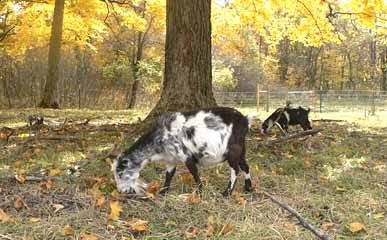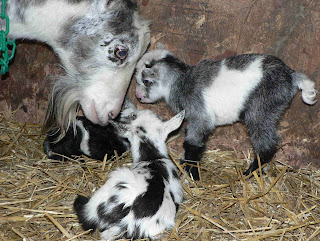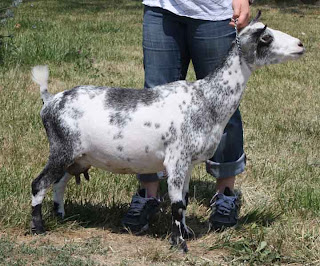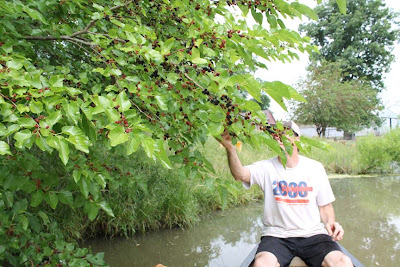 |
| Mama Cow Bridget and baby Ciara last summer |
More than a month ago, I got an email from someone asking if I knew where they could buy a couple of feeder Irish Dexters -- feeders are cattle raised just for meat. I said that I didn't know anyone who sold feeder Dexters, but I was selling my two cows and the heifer. A few more emails and a month later, and we found ourselves loading up the cattle.
 |
| Molly with her little bull, which we called Sir Loin last summer |
No one could remember how we had loaded up the bulls the year before, so we all came to the conclusion that it must have been easy and unremarkable. But no one really believed it could have been that easy. We knew we would have to move them all into a small pen and then get the bulls separated from the cows and loaded onto a tiny two-horse trailer.
My job was to keep the girls occupied with alfalfa while Mike and Jonathan lured the bulls into the trailer with alfalfa. And to our complete shock, it actually worked. And it worked quickly! Both bulls were loaded and ready to leave in less than ten minutes.
When the buyer came to get the girls a couple hours later, things did not go quite as smoothly. Bridget, being the most outgoing of the cows, was quick to follow whomever was offering her alfalfa, and she'd even follow him into the trailer ... but only her front half. As soon as her rear legs touched the trailer floor, she'd back out. This little dance went on for about half an hour, but finally she decided the lure of the alfalfa was stronger than her fear of lifting up those rear legs and putting her whole body into the trailer.
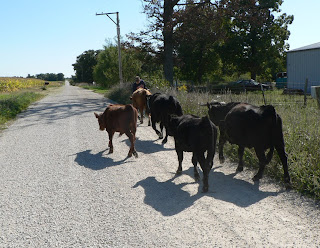 There is a part of me that really misses the cows, but there is a bigger part of me that is relieved. I will definitely miss the grassfed beef, but the bulls dressed out at 384 and 346 pounds, and we're keeping the 384 pounder, so we'll continue to enjoy the beef for another year or two. I am relieved, however, that we will never again discover that we have to retrieve cows from someone else's yard a mile away. And luckily, Mike and our children were always home when that happened. My big fear was that I would be home alone someday and get one of those phone calls. I really don't know how I would have ever brought the cows home if they had escaped when I was home alone.
There is a part of me that really misses the cows, but there is a bigger part of me that is relieved. I will definitely miss the grassfed beef, but the bulls dressed out at 384 and 346 pounds, and we're keeping the 384 pounder, so we'll continue to enjoy the beef for another year or two. I am relieved, however, that we will never again discover that we have to retrieve cows from someone else's yard a mile away. And luckily, Mike and our children were always home when that happened. My big fear was that I would be home alone someday and get one of those phone calls. I really don't know how I would have ever brought the cows home if they had escaped when I was home alone. I suppose it was hard for me to sell the cattle because it felt like admitting defeat. I had so wanted to milk them and make cheese and other dairy products from their milk as we do with the goats. But we never got set up to milk cows. We didn't have a head gate or stanchion for milking them, and we couldn't even keep the cows separated from their calves successfully overnight. Moving Bridget the horned black cow from pasture to barn and back again was scary, even though I'm sure she would never intentionally try to hurt us. It is unnerving to see two big swords moving towards your chest propelled by 800 pounds of muscle.
My youngest daughter who is home for a couple of days asked, "So, does this mean you'll never have cows again?"
"I never say never," I said with a smile.

